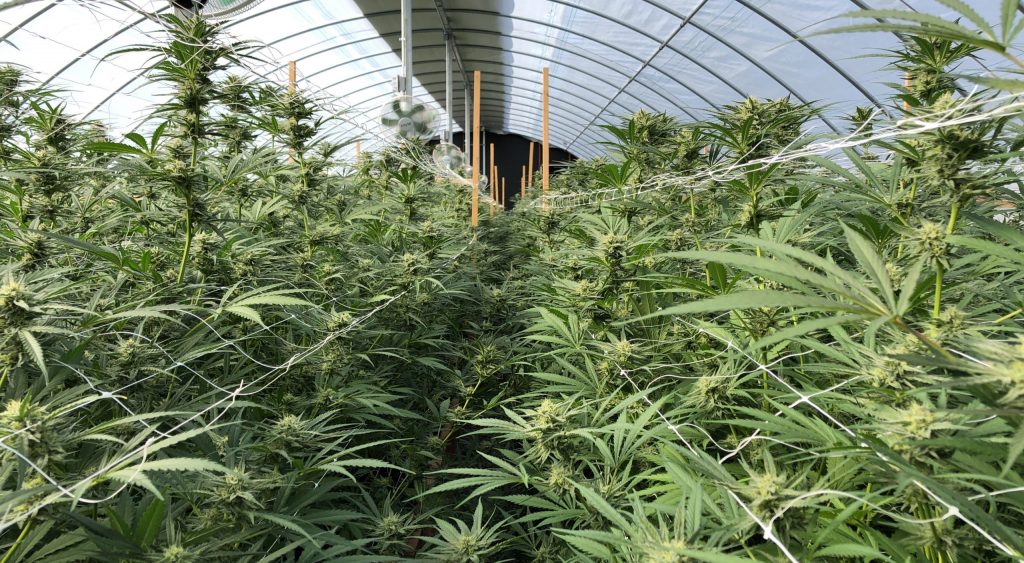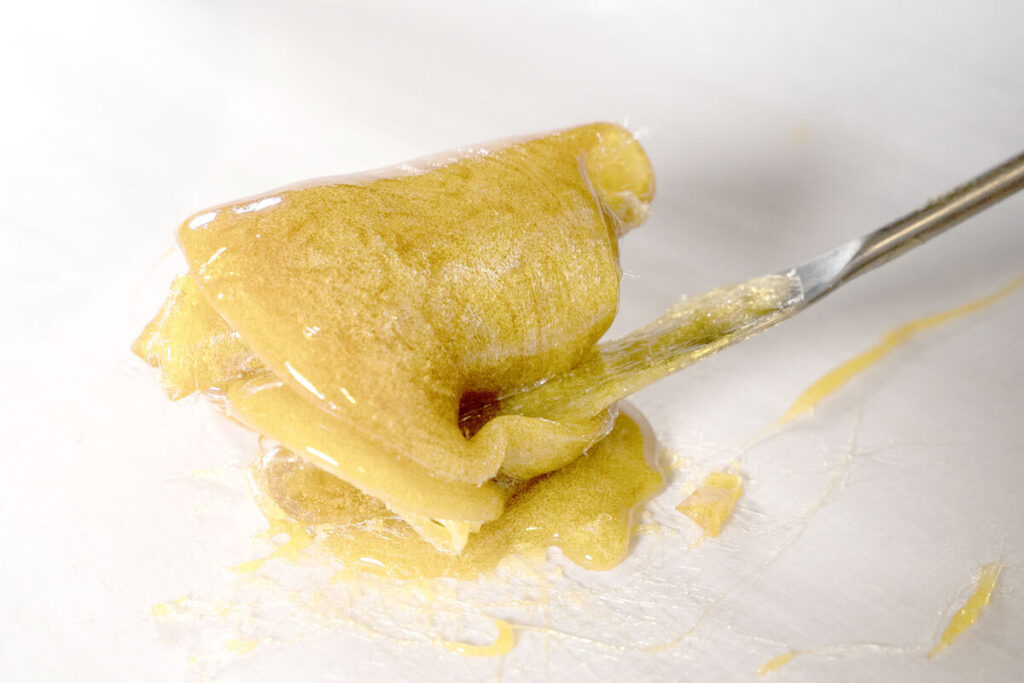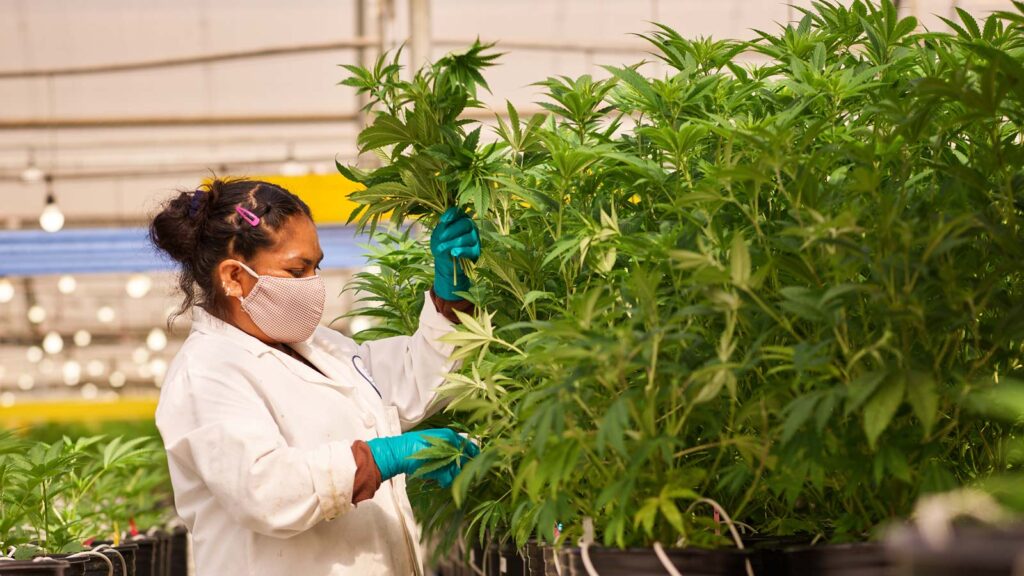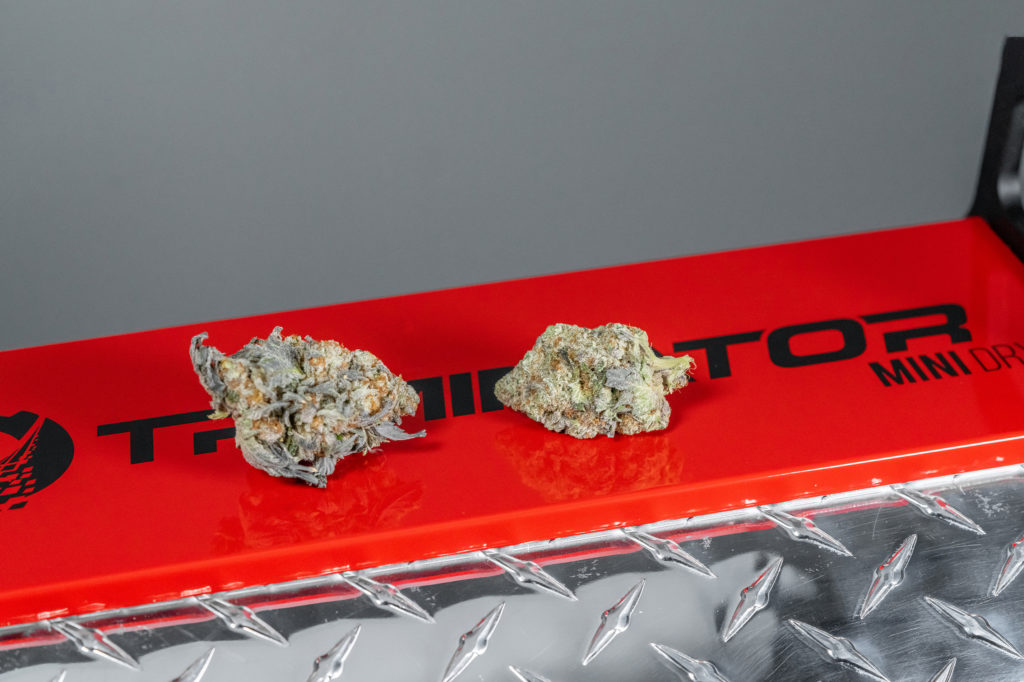How To Write a Cannabis Cultivation Business Plan

A business plan for cannabis cultivation businesses will help a company get organized, licensed, profitable, and bring in more potential investors. Learn more here.
A cannabis cultivation business plan is a requirement for state licensure — and a critical tool for running your business and getting investors on board.
You’ll find dozens of business plan templates online, which you can (and should) reference when crafting your business plan. However, a commercial cultivation business plan is different in several ways.
This post explores the unique considerations of commercial cannabis business plans: which elements to include, budgetary considerations, and how to make your plan a functional document to streamline and safeguard your cannabis company. Note: You may have other elements of your business (like retail) that aren’t included in this article. For simplicity’s sake, it focuses on cultivators who sell wholesale to third parties.

What is a Cannabis Cultivation Business Plan?
A business plan is a written document that lays out the critical details of your operation. State regulators will want to see a solid business plan in place before granting you a cannabis license because it shows them you have what it takes to succeed (e.g., money, personnel, preparation).
The process of building a business plan will help organize your thoughts and get your executive team on the same page.
You’ll identify weak areas and strengthen them. You’ll clarify your operating procedures. And when it gets down to the financial aspects, you’ll know if you have what it takes to make it all possible.
Furthermore, investors and lenders want to see a business plan before backing your company. They also want to see your team’s credentials, marketing plan, and existing resources before investing.
Why Do You Need a Plan?
When you’re keen to enter a fast-growing industry like the cannabis landscape, writing a business plan can seem like a waste of time. However, the right plan is more valuable than you’d think. It allows you to evaluate the challenges and opportunities you’ll face in your industry, formulate a strategy for success, and predict potential hurdles.
Overall, having a business plan makes it far more likely your business will succeed.
Studies show that companies with comprehensive business plans have a 30% better chance of sustainable growth. In fact, more than 70% of businesses that create a business plan survive for at least five years, and 71% of the fastest-growing businesses have a clear business plan.
Additionally, creating a cannabis cultivation business plan means you can:
- Prepare a more accurate budget: When you’re creating your business plan, you’ll identify exactly which equipment you’ll need, how many employees you’ll need to hire, and what other costs you’ll incur when launching and running your business. This ensures you can properly prepare for financial success.
- Improve your chances of regulatory compliance: When you’re outlining the “operations” section of your business plan, you’ll have a chance to think about regulatory compliance guidelines and how they’ll affect your operations. This can be a great time to look at ways to ensure you’re compliant with industry standards like GMP and other operating guidelines.
- Identify go-to-market opportunities: Through market analysis and developing your marketing and sales strategy, you can build a comprehensive go-to-market plan that boosts your chances of a successful launch and sustainable growth. 85% of businesses say a strong go-to-market plan has helped them increase revenue.
A business plan will also encourage you to do the research required to fully understand your customers, assess competitors, and ensure you’re prepared to attract the right talent and investors to your team. It can even boost your chances of avoiding risks by ensuring you position your business effectively when you launch in the competitive cannabis market.
What Goes in a Cannabis Business Plan?
Here’s a quick rundown of the elements of a business plan. The biggest differences regarding a cannabis-specific plan can be found in the financial and operational sections.
Executive Summary
To kick off your document, you’ll write a two- to five-page executive summary. It gives the reader the “who, why, when, where, and how” of your business while also showing the ways your business is different from competitors.
Make sure to include your mission statement, location, operational goals, executive team members, financing partners, existing resources, operational overview, and predicted timeline for profitability.
Company Details
This section lists the factual statistics of your business, such as your legal structure and corporate name, address and contact info, facility size, number of employees, and licenses currently held.
Market Analysis
Carefully crafting this section of your cannabis cultivation business plan will improve your likelihood of success. You will need to do market research and detail your competition (and future competition) while identifying market trends and how you’ll meet consumer demands.
For example, according to Custom Markets Insights, the cannabis concentrate market is currently one of the fastest-growing niches in the industry, accelerating at a CAGR of 25.04%. Based on this data, you may decide to focus your business model around selling concentrates.
Check out industry fact sheets from the Brightfield Group, Marijuana Business Daily, and Cannabis Business Times for state-level market data and consumer trends.
Marketing & Sales Strategy
“Marketing” means more than advertising — it’s your strategy for lining up distribution channels, identifying your target market, and staying competitive.
Your cannabis cultivation business plan should summarize your marketing and distribution, but you may want to create a separate, full-length marketing plan as well.
A marketing plan typically includes:
- A SWOT analysis (strengths/weaknesses/opportunities/threats)
- Predicted distribution channels and established partnerships
- Advertising, promotion, and social media strategies
- Sales strategies and outreach methods
- Detailed market analysis
A cultivation business plan should — at a minimum — include information about distribution plans, promotions and marketing strategy, and sales outreach. It’s also worth conducting research into the rules and guidelines that govern cannabis marketing. For instance, by law, you’ll need to ensure your ads are specifically targeted to people over the age of 21.
Product Orientation
A cannabis cultivation business plan will define the types of cannabis products you will provide to the market. If you’re a savvy business owner, which cannabis strains you produce, and the cultivation techniques you use will match what the market demands.
Maybe you’re working with a large-scale extraction company or product manufacturer. In that case, you’ll select genetics known for high oil yield, such as Gorilla Glue. If you serve the craft market, you may focus on rare landrace cultivars or exotic new hybrids.
If you’re adhering to the latest cannabis consumption trends, you might focus on creating solventless cannabis products. According to reports, the solventless category grew in value by 132% each month between 2021 and 2022.

In any instance, make sure you’re meeting local market demand.
Management & Personnel
For investors, your management team matters as much as — if not more — than your other resources.
This section includes the curricula vitae of your executive team and head growers. It’s the place to show off your accomplishments, proving to outside parties that you have the business acumen and horticultural expertise to sustain your company.
The executive summary section also helps clarify roles within the company and outlines who will be responsible for what tasks creating an organizational structure.

What Makes a Cannabis Cultivation Business Plan Different?
The six sections listed above will be similar for many types of businesses — from restaurants to software companies.
But the two sections below — Financial Projections and Business Operations — warrant special attention if you’re writing a cannabis business plan. Here’s why.
Financial Projections for Cannabis Cultivation
The financial section of any business plan will detail expenses and income on a quarterly and yearly basis. Investors want to see this information and need to believe it’s credible before assuming risk.
Making financial projections for cannabis businesses, however, can be complicated.
Income is very hard to calculate due to the volatility of growing cannabis and the cannabis market (see below). Expenses, however, are easy enough to tally. They fall into two categories:
Capital Expenses
Capital expenses (CAPEX) include real estate, property renovations, benching, farm equipment, and lighting systems, among other high-ticket items for the cultivation facility. These are the expenses that usually require outside investment and have a long payoff period.
Operating Expenses
Day-to-day operating expenses (OPEX) break down into two subcategories: fixed expenses and variable expenses.
Fixed expenses recur predictably on a monthly, quarter, or annual basis regardless of your production volume. These are things like a mortgage or lease payment, licensing fees, and state and municipal taxes. Salaries also qualify as fixed expenses.
Variable expenses scale with your production, yet you can often reduce them by being more efficient.
For indoor and greenhouse cultivators, the largest variable expenses are hourly labor and utility payments, followed by nutrient spending and growing media. Labor costs have surged in recent years, rising to around $14-$25 per hour in 2023.
Invest for Success
Ready to reduce your expenses — permanently — while maintaining or even increasing your product quality?

Triminator brings you cannabis processing equipment that dramatically cuts your labor costs and — depending on how you finance your machine — may create an immediate boost in cash flow.
Discover how including Triminator equipment in your business plan can lower your operating expenses and make you more attractive to outside financiers.
Check out the most popular Triminator models for every step of your post-harvest plan.
Ultimately, you want to reduce your cost per pound to the absolute minimum. Some cultivators in favorable outdoor locations achieve a reported cost-per-pound as low as $150, depending on their growing method. Others, who suffer from high electricity prices and high heat removal loads, may spend up to $1,000 per pound of finished flower.
In 2021, according to Statista, the cost to produce a pound of flower varied as follows, based on marijuana cultivation methods:
- Indoor/warehouse: $472 per pound
- Greenhouse: $256 per pound
- Outdoors: $214 per pound
Predicting Income
Projecting revenue is difficult for new cannabis cultivators for two reasons.
First off, cannabis market prices fluctuate wildly, and in general, they’re trending downward. California experienced a 50% price drop from 2020 to 2021, before rebounding in 2022. This type of price instability can make nonsense of even the best-made financial plan projections.
The other factor is yield. Not all cultivators are equally skilled or equally equipped to produce quality cannabis. Competence affects your cost per pound, but, just as critically, it determines your revenue.
Adverse cultivation events — such as a pest infestation or bad weather — ruin countless crops every year and reduce gross revenue to near zero. That’s why a cannabis business plan should make conservative projections and reserve a fat buffer for emergencies and price fluctuations.
Watch Your Burn Rate
New cannabis entrepreneurs are surprised by their high burn rate and long profitability delay. (A burn rate is how much you’re spending in excess of your income.) And because a newly propagated marijuana plant is at least 12 weeks from market, cultivators experience months of operating expenses without any income.
A cannabis cultivation business plan should be conservative — expect higher expenses and longer-than-anticipated delays in revenue.
Operations and Compliance
All business plans have information about operations; a cannabis cultivation business plan has an operations section as well as specific compliance information.
Your state law will dictate what to include in this section, and it’s important to align your plan with regulations as they apply to your facility. It’s also important to consider regulatory standards, like GMP, that may be applicable to your cannabis business. Many companies in the cannabis industry designate a chief compliance officer to ensure they’re meeting regulations — both in the planning stages and on an ongoing basis.
Essentially, the state has already outlined how you’ll operate.
Your job is to mirror the regulations in your operations and compliance plans and customize them to your facility and goals.
The operations plan section will detail exactly how you’ll run your company as well as how you cultivate cannabis. It serves as a high-level overview of your standard operating procedures (SOPs) which you should develop separately as written documents.
Break the operations plan down by company division, and make sure to include the following subsections:
- Cultivation, processing, and storage
- Inventory and seed-to-sale tracking
- Security plans and infrastructure
- Human resources and training
- Transportation protocols, if applicable
- Bookkeeping and accounting
- Quality control processes
- Documentation procedures
Pro Tips
Competitors’ business plans may be publicly available. Depending on your state, you may be able to find previous applications online. Those applications sometimes include full or partial business plans.
Consider hiring an outside writer or consultant if you’re lacking in-house expertise or simply want an outside eye to review your project. A few cannabis-specialized organizations exist to help you author a license application or your cannabis cultivation business plan.
Invest in profitable equipment systems and proactive partners. Here at Triminator, we take your business as seriously as you do, offering industry-leading customer service in addition to our proven line of trimmers, buckers, shredders, and rosin presses.
Check out the Triminator line processing equipment now, and feel free to reach out with questions as you create the processing section of your cannabis cultivation business plan.
Like what you read?
Get more insider industry knowledge sent right to your inbox
"*" indicates required fields